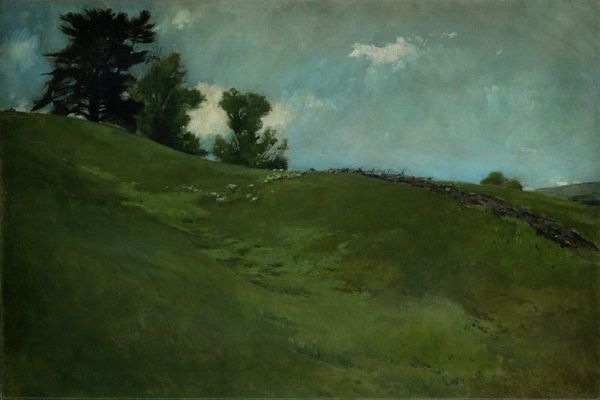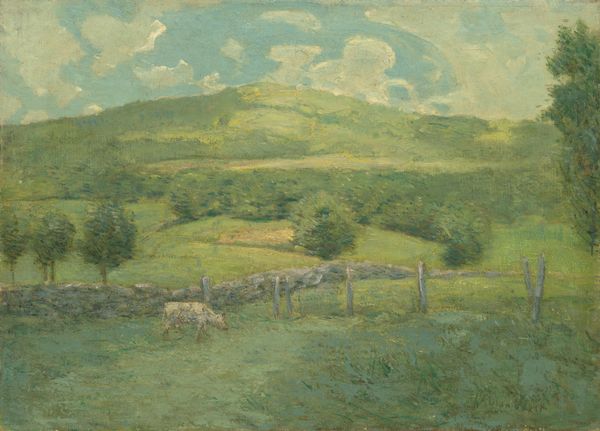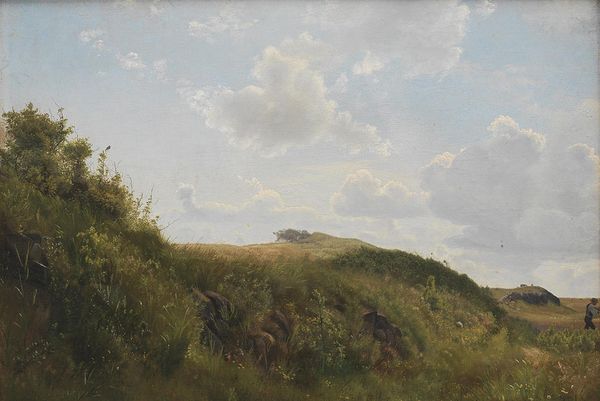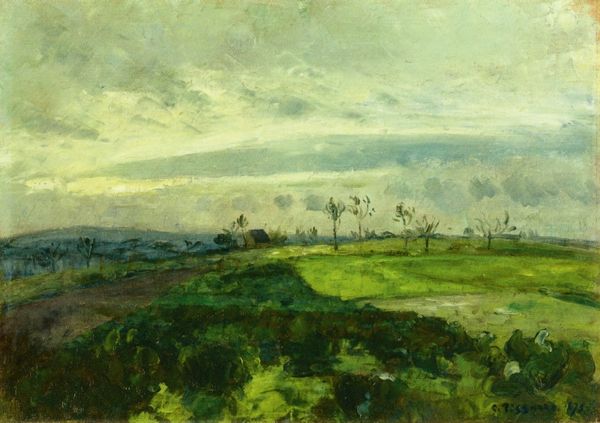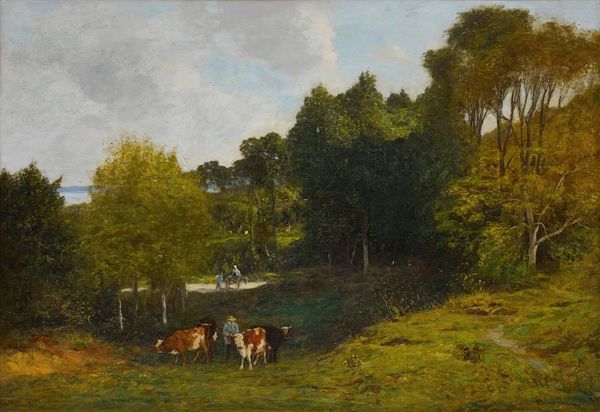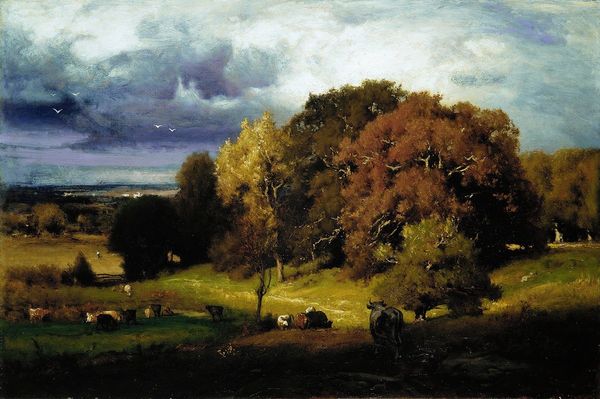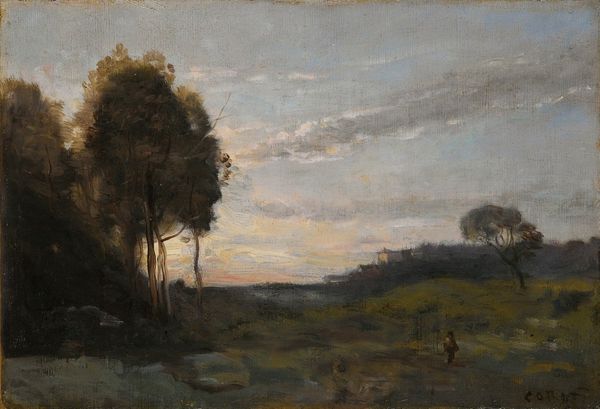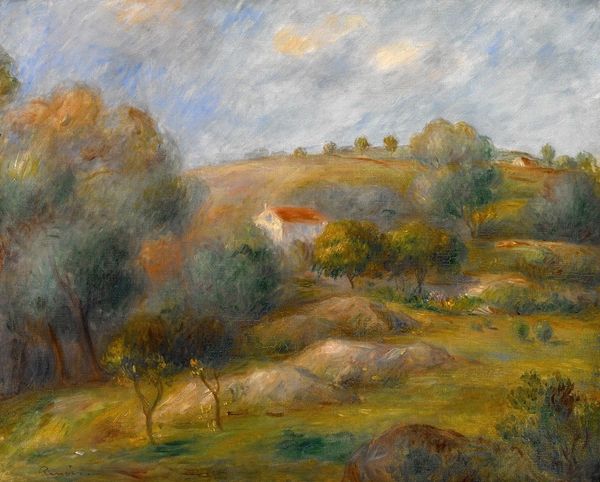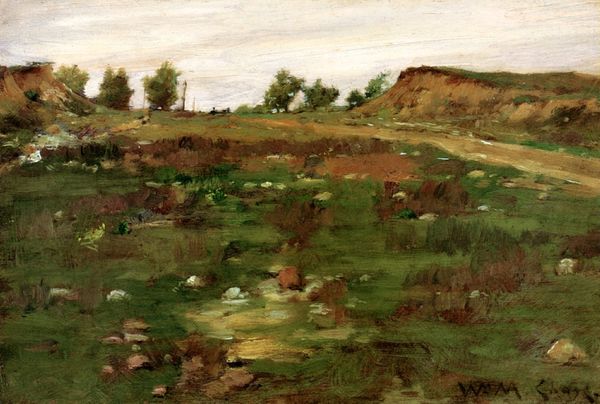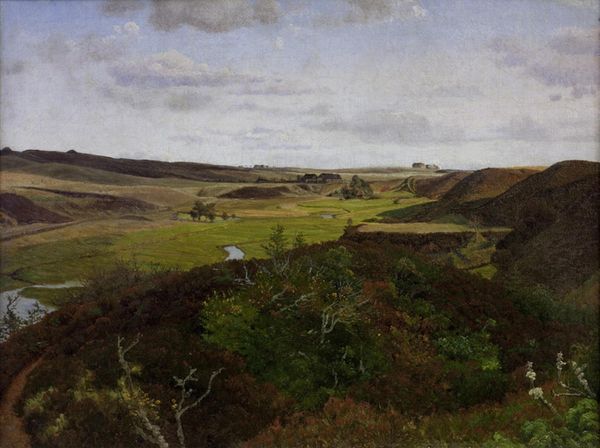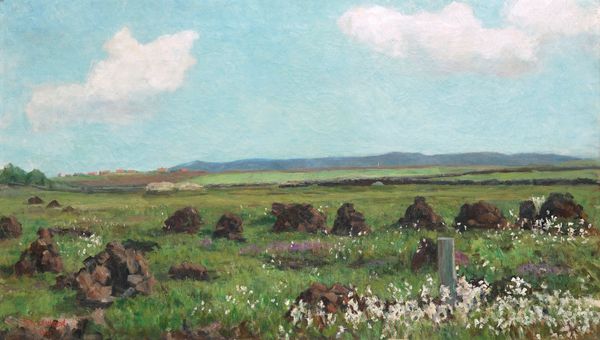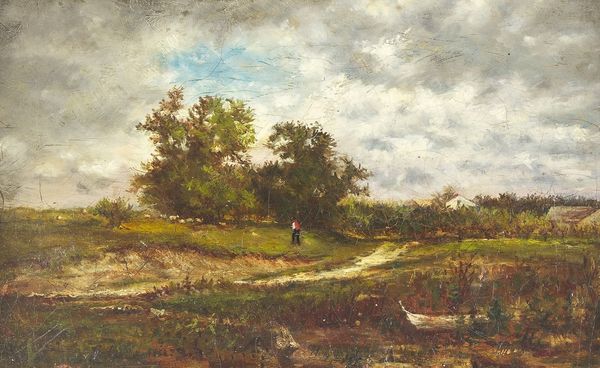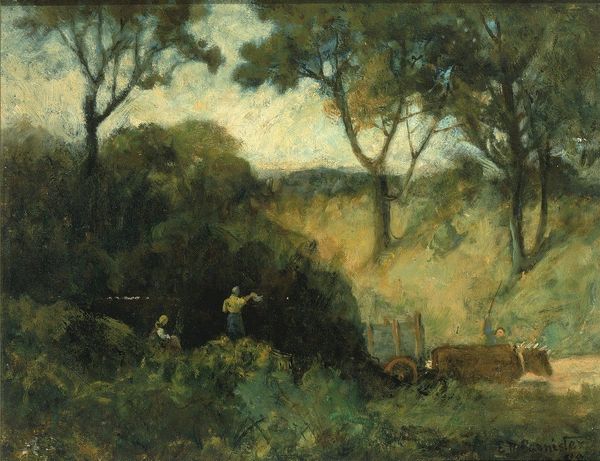
plein-air, oil-paint
#
impressionism
#
plein-air
#
oil-paint
#
landscape
#
impressionist landscape
#
oil painting
#
watercolor
#
realism
Copyright: Public Domain: Artvee
Curator: Before us hangs Jean-François Millet’s "Pasture near Cherbourg," an oil on canvas created circa 1871-1872. Editor: It feels…peaceful. A classically idealized landscape. Rolling hills, fluffy clouds, grazing animals—it evokes a certain bucolic simplicity. Curator: Absolutely, though that simplicity is quite deliberately constructed. Millet, known for depicting peasant life, presents a specific narrative here, one influenced by the political climate after the Franco-Prussian War. Editor: So, less a reflection of reality and more an ideological statement? How so? Curator: The painting, seemingly straightforward, reflects a longing for a more stable, pastoral past amid political and social upheaval. Consider the arrangement – the careful balance between light and shadow, the implied order in the way the fields are divided. These elements don't just create a pretty picture; they offer a vision of social harmony. Editor: And the figures are quite small, almost anonymous within this vast landscape, underscoring perhaps their role within a larger, natural order. How does this connect with realism as a movement? I see some impressionistic techniques too. Curator: Yes, a touch of both. It exemplifies a sort of Realism in that it focuses on the everyday but simultaneously idealizes rural labor and life in a way that certainly deviates from unflinching documentary style. The looseness of the brushstrokes, hinting at Impressionism, soften the harsh realities often associated with agrarian life, contributing to the overall sense of peace. Also, plein-air painting offered Millet some novel ways to look at landscapes. Editor: So the painting functions on multiple levels, both as a tranquil landscape and a commentary on societal values and tensions? Curator: Precisely. Millet leverages the visual language of pastoral imagery to express anxieties and aspirations related to the restructuring of France following war, using the natural world as a stage for socio-political desires. Editor: I see now that “Pasture near Cherbourg” is less a snapshot and more a carefully orchestrated scene designed to speak to deeper social and political currents. Curator: And through Millet's craft, this artwork stands as both an aesthetic object and a potent historical artifact, prompting us to reflect on how art shapes—and is shaped by—the society around it.
Comments
No comments
Be the first to comment and join the conversation on the ultimate creative platform.
